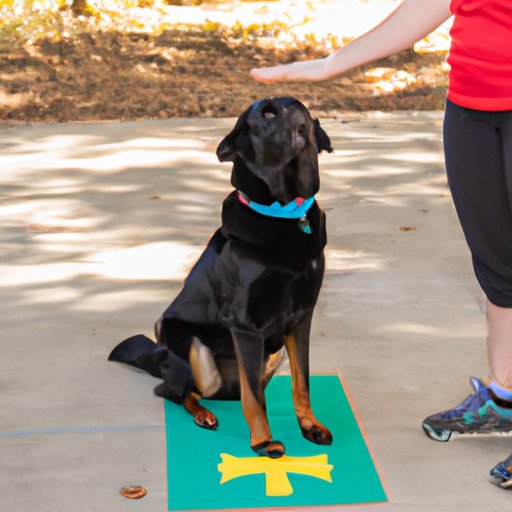Introduction
Therapy dogs are special animals trained to provide comfort and emotional support to those in need. From visiting hospitals and nursing homes to providing companionship and support to people with disabilities, these furry friends are invaluable to the mental health of many. If you have a pet that you think would make a great therapy dog, this article will provide you with all the information you need to get them certified.

Benefits of Having a Therapy Dog
Having a therapy dog offers a number of benefits both to the owner and those around them. Here are just a few:
Improved mental health: Studies have shown that having a therapy dog can help reduce stress and anxiety levels, as well as depression. Interacting with a therapy dog can also boost serotonin levels, which can lead to improved moods and overall wellbeing.
Companionship and support: Therapy dogs provide valuable companionship and unconditional love for those who may be feeling lonely or isolated. They can also provide much-needed emotional support to those going through tough times.
Increased independence: Therapy dogs can also help those with disabilities increase their independence by helping them complete everyday tasks such as retrieving items or opening doors.
Steps to Training a Dog to Become a Therapy Dog
Training a dog to become a therapy dog is no easy feat. It takes dedication, patience, and consistency to ensure that your pup has the skills needed to be successful. Here are the steps you should take to ensure that your dog is ready for therapy work:
Obedience Training
The first step in training a therapy dog is teaching them basic obedience commands. This includes sit, stay, come, down, heel, place, and leave it. These commands are important as they will help your dog remain calm and focused while interacting with people.
Socialization
Socialization is essential when it comes to therapy work. Your dog needs to be comfortable and confident around all types of people, from children to the elderly. Taking them out in public settings and exposing them to different sights, sounds, and smells will help them get used to different situations and environments.
Proper Behavior
In addition to obedience and socialization, your dog should also understand proper behavior around people. This means teaching them not to jump on people, bark excessively, or bite. They should also be able to stay still for long periods of time without becoming restless.

Examples of Obedience Exercises and Commands Needed for a Therapy Dog
Here are some examples of the obedience exercises and commands your therapy dog should know:
- Sit: Teaching your dog to sit calmly and stay still when given the command.
- Stay: Teaching your dog to stay in one spot until released.
- Come: Teaching your dog to come when called.
- Down: Teaching your dog to lie down on command.
- Heel: Teaching your dog to walk beside you without pulling.
- Place: Teaching your dog to go to a designated spot and stay there.
- Leave it: Teaching your dog to ignore food or other objects that may be tempting.

The Importance of Socialization and Proper Behavior
In order to be successful as a therapy dog, your pup must be socialized and understand proper behavior around people. This means understanding body language, building relationships, and responding to commands. Your dog should be friendly and approachable, but not overly excitable or aggressive.
Process of Registering and Certifying the Dog as a Therapy Animal
Once your dog meets all the necessary requirements for therapy work, it’s time to register and certify them as a therapy animal. This process typically involves finding a qualified organization, passing an assessment test, providing proof of vaccinations, and completing a background check.
Conclusion
Training a dog to be a therapy animal is no small task. It requires dedication, patience, and consistency to ensure that your pup is ready for the job. With the right training, however, your pup can become a certified therapy animal and provide comfort and emotional support to those in need.
(Note: Is this article not meeting your expectations? Do you have knowledge or insights to share? Unlock new opportunities and expand your reach by joining our authors team. Click Registration to join us and share your expertise with our readers.)
